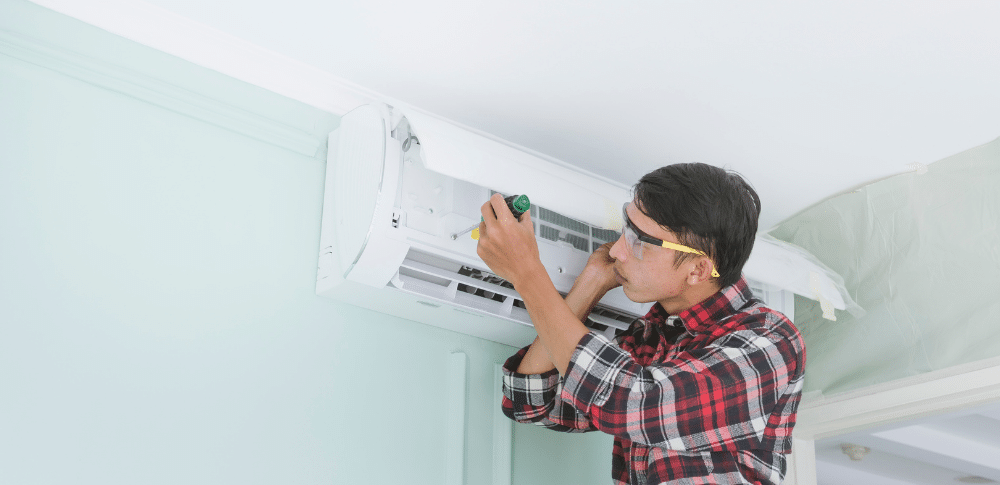If you’re planning to install ducted air conditioning, you might be wondering how long the process will take. While the installation timeframe can vary based on a few key factors, most standard jobs are completed within 1 to 3 days. In this blog, we’ll walk you through what affects installation time and what to expect from start to finish.
Understanding the Ducted Air Conditioning Installation Process
Installing a ducted system involves more than just connecting a few vents. It’s a detailed process that requires proper planning, equipment setup, and precise work. A qualified ducted air conditioning installer will assess your space, design the layout, and fit the indoor and outdoor units along with the ductwork and zoning controls.
This process generally includes:
- Installing the indoor unit (usually in the roof or underfloor space)
- Positioning the outdoor compressor unit
- Running ductwork through the ceiling or floor to each room
- Installing supply vents and return air grilles
- Wiring the system and connecting it to a controller or smart thermostat
A site inspection before installation ensures everything is tailored to your home’s layout and airflow needs. For homeowners in North Texas, energy efficiency plays a big role in how you size and operate your air conditioning system. Comparing plano electricity rates before installation can help you better estimate long-term energy costs and select a system that balances comfort with affordability.
Typical Timeframes for Installation
For most homes, ducted air conditioning can be installed in:
- 1 to 2 days for standard single-storey homes with good roof access
- 2 to 3 days for larger or two-storey homes where access is more complex
- 1 day if it’s a small system in a new build with pre-planned duct routes
New builds may be quicker, especially when the system is installed during construction. Retrofitting in existing homes often takes a bit longer due to access limitations and the need to work around existing structures.
Factors That Can Affect Installation Time
Several variables can influence how long the installation takes:
- Property size and layout: More zones and larger areas mean more ducting and longer installation.
- Roof space and access: Tight or cluttered roof cavities slow down installation.
- System complexity: Features like zoning, advanced controls, or custom designs increase time.
- Electrical upgrades: If your switchboard needs updating or a dedicated circuit is required, it may add a few hours.
- Weather conditions: Rain or extreme heat may delay outdoor unit installation or access to roof cavities.
What Happens Before Installation Day?
Before any tools are picked up, your installer will:
- Visit the property to assess roof space and room layout
- Calculate cooling and heating loads to determine the best unit size
- Design the duct layout and suggest optimal vent placement
- Provide a detailed quote including system options and zoning
- Schedule installation based on availability and homeowner convenience
Installation Day Breakdown
While each job is unique, a typical ducted air conditioning installation may look like this:
Day 1
- Indoor and outdoor units are installed
- Main ductwork is fitted into the ceiling or floor
- Vents and grilles are cut and prepped
Day 2
- Remaining ducts are connected
- Zoning motors and wiring are installed
- Electrical connections are finalised
Day 3 (if required)
- System is tested and balanced
- Thermostat or controller is installed
- Final walkthrough and handover
How to Prepare Your Home for Installation
You can help make the process smoother by:
- Clearing access to manholes, roof space, and electrical panels
- Moving furniture away from wall vents or ceiling entry points
- Letting the installer know about pets, parking, or time restrictions
- Being available for questions or approvals on the day
Final Testing and System Handover
After everything is connected, your installer will:
- Test airflow in each room
- Ensure temperature zoning is working correctly
- Show you how to use the control system or mobile app
- Explain maintenance tips and provide warranty details
This final step ensures you know exactly how to manage your new system for maximum comfort and efficiency.
Parting Words
While the installation of ducted air conditioning typically takes 1 to 3 days, the key to a smooth experience is preparation and hiring an experienced installer. Quality work can’t be rushed — and a system that’s installed properly will last longer, perform better, and use less energy.
If you’re considering a ducted system, plan ahead, ask about installation timelines, and make sure your installer provides a clear breakdown of what to expect.

